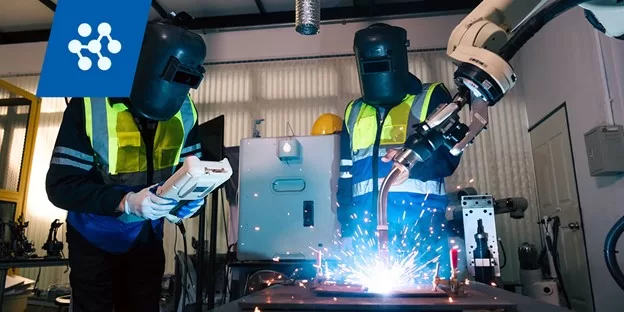Collaborative robots — “cobots,” for short — have made big waves in heavily automated industries. Manufacturers and warehouse operators can gain much from safer, more adaptable bots that work alongside employees instead of replacing them. However, cobots’ potential extends far beyond these sectors.
While sectors already used to automation were among the first to benefit from cobots, they’re not the only ones. Collaborative robots are valuable in many sectors, most notably in workforce-strained and hazardous jobs like construction. Robots may not yet be common in the building industry, but this field is growing and shows remarkable potential.
Benefits of Cobots in Construction
Construction cobots produce many of the same benefits as those in manufacturing and logistics. Namely, they boost efficiency and improve worker safety.
The construction sector is a dangerous one, accounting for nearly one in five workplace deaths — more than any other industry. Cobots help by automating the most strenuous or hazardous parts of the job. These bots can lay bricks, drill overhead, and perform other typically repetitive and error-prone asks to distance employees from the biggest on-site risks, reducing the likelihood of an injury.
Automating some tasks will also help address the sector’s labor challenges. Fewer and fewer people are entering blue-collar roles like construction, but demand keeps climbing. Cobots work alongside employees to accomplish more without a larger workforce, helping contractors stay productive despite a smaller number of workers.
They’re also often faster than humans. Some have performed sanding work that would take a person 12 hours in just 3.5 hours, which is hard to ignore considering how common delays are in construction. The reduction in injuries is likewise crucial for an industry facing massive demand but historically high turnover.
Construction Cobots Today
Collaborative robots are not as common in construction as in other sectors, but that’s starting to change. As more companies acknowledge these benefits, more manufacturers are producing construction-focused cobots, leading to higher adoption.
Just 7.7% of contractors in 2024 used robotics for most projects, but 19.2% have used them on “several.” It’s also worth noting that 34.6% of contractors say they’re piloting robotic solutions, equalling the number who say they haven’t implemented this technology at all.
While adoption has been slow, several construction cobots are available on the market today. Autonomous construction vehicles already exist in several forms and can operate around the clock to increase worksite productivity. Other cobots drill in areas that would be dangerous to humans, move materials or print building guides on the floor to make it easier for contractors to follow blueprints, reducing time loss to errors.
The Future of Cobots in Construction
Early case studies of construction cobots are promising. Some projects have seen a three-fold increase in labor productivity by implementing a single machine. As more such stories emerge, they’ll encourage more firms to embrace these solutions, so automated construction technologies will likely surge in the future.
One study predicts over 60% of construction firms will employ some kind of robotic system by 2033. While this prediction includes conventional robots and not just cobots, collaborative solutions are a key driver of this rising adoption. The safety and efficiency benefits of human-robot collaboration are too great for the industry to ignore.
Some workforce adaptation may be necessary to sustain this growth. As beneficial as cobots are in construction, they may raise uncertainty over job security among human workers. Employers will need to emphasize the use of robots alongside employees instead of replacing them and offer upskilling opportunities to manage such concerns.
High costs and technical requirements may pose another barrier. Construction firms can respond by taking a slower approach to adoption, focusing on implementing cobots where they’re most impactful first. Reskilling and looking for low-code or no-code cobot solutions will aid the ease of integration.
Cobots Could Transform the Construction Sector
Cobots — like robotics as a whole — are most well-known as production technology, but manufacturing and warehousing only scratch the surface of their potential. Their opportunities in construction are also vast.
While the use of cobots in construction is still relatively new, over time, technology will advance and more businesses will recognize this value. This will lead to a wave of cobot-led disruption across the industry.

